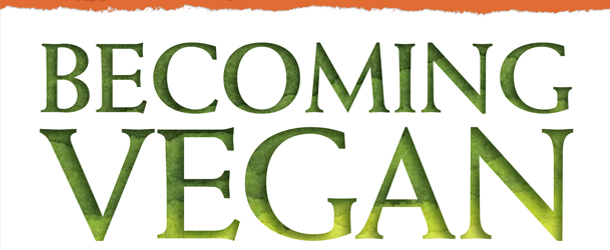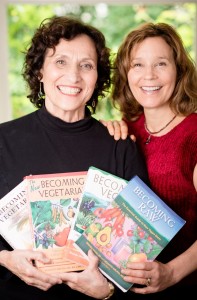 One of the first books I bought when I went vegan in 2001 was Becoming Vegan by Brenda Davis and Vesanto Melina. The must-have book is a complete guide to transitioning to a vegan diet in a healthy manner. The book covers everything from how a vegan diet can prevent certain diseases and chronic illnesses to how to get nutrients such as protein, calcium and iron. Vegan diets for pregnant women, infants and children, seniors and athletes is also covered.
One of the first books I bought when I went vegan in 2001 was Becoming Vegan by Brenda Davis and Vesanto Melina. The must-have book is a complete guide to transitioning to a vegan diet in a healthy manner. The book covers everything from how a vegan diet can prevent certain diseases and chronic illnesses to how to get nutrients such as protein, calcium and iron. Vegan diets for pregnant women, infants and children, seniors and athletes is also covered.
Brenda Davis and Vesanto Melina have recently revised their classic book, and Becoming Vegan: Express Edition is now available. The revised book offers new evidence of the health benefits of a vegan diet, expanded information on phytonutrients, in-depth coverage of all the essential nutrients—calcium, protein, essential fatty acids, good carbs, and vitamin D and B12, and a thoroughly updated food guide. Fresh insight on the treatment of animals in food production brings to light the lack of connection between consumers’ compassion for animals and what is on their plates. Guidelines are presented on how to design a balanced vegan diet for infants, children, pregnant women and nursing mothers, and seniors, as well as on how to maintain a healthy weight. This streamlined “express” version is extensive yet easily understandable and offers lay readers a sound blueprint to follow.
Brenda Davis, RD, and Vesanto Melina, MS, RD, have co-authored books that have been translated into over 7 languages and sold in more than a dozen countries. Brenda is currently the lead dietitian on a diabetes intervention research project in the Marshall Islands, and is a sought-after speaker. Vesanto coauthored the joint position paper on vegetarian diets for the Academy of Nutrition and Dietetics and the Dietitians of Canada and is a consultant to the government of British Columbia.
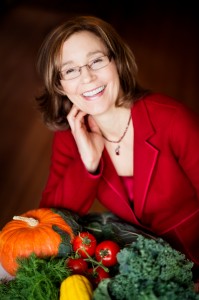 Chic Vegan – What motivated each of you to become vegan? Was it an overnight switch or more gradual shift?
Chic Vegan – What motivated each of you to become vegan? Was it an overnight switch or more gradual shift?
Brenda Davis – Many factors affected my decision to become vegan, but none more compelling than my interaction with a friend back in 1989. On a rather ordinary day, my friend called to see if he could drop by for coffee on his way deer hunting. Although my response was positive, I immediately began thinking about what I could say to make him feel guilty. After dispensing with the usual trivialities, I asked him what is was that made him want to kill such a beautiful, innocent creature. I pointed out that it didn’t seem like much of a “sport” to me – after all, in “sports”, both teams have the same equipment. Then I asked him if it made him feel like more of a man. His response changed the course of my life. He responded, “You have no right to criticize me. Just because you don’t have the guts to pull the trigger, does not mean you are not reasonable for the trigger being pulled every time you buy a piece of meat camouflaged in cellophane in the grocery store. You are simply paying someone to do the dirty work for you. At least the deer I eat has had a life. I doubt very much you can say the same for the animals sitting on your plate.” I was silenced, because I knew deep down inside he was absolutely right. At that moment I vowed to take responsibility for the food I was purchasing. I read everything I could about animal agriculture, and quickly realized that the system had changed dramatically from the days my mom grew up on a farm. I vowed that I would spend the rest of my life contributing as little as possible to the pain, suffering and death of my fellow creatures. At that time, I didn’t know any other vegetarians, and I was a public health nutritionist, encouraging the consumption of a balanced diet, including plenty of animal products. Interestingly, when I asked my husband (the hunter’s best friend!) if he was willing to become completely vegetarian, he answered, “I thought you would never ask”. He was always a step ahead of me! While we did make a sudden shift, we had been moving towards a more plant-based diet for about 10 years, so already included plenty of legumes and tofu on our menu.
Vesanto’s Melina – I had been vegetarian for 20 years when, in 1993 while writing a “Without Dairy” chapter for our first book, Becoming Vegetarian, I came face to face with my own mistaken belief that dairy products were essential to human health. From a critical review of the scientific research, I soon learned that I could survive very well without any flesh or fluids of animal origin. Over time, I learned about the profound impacts of our food choices on the environment, health, human hunger, and the lives of animals. In doing the extensive nutrition research that is a foundation of our books, I came to see that a vegan diet could provide every nutrient that we need in recommended amounts, and that such a diet makes sense for reasons that become more compelling every year. I was deeply touched by the plight and tragic lives and deaths of pigs, cows, calves, chickens and turkeys when they are regarded as “food animals.” I came to appreciate how many of us are voting with our grocery dollars for good health, compassion for animals, and sustainable agriculture. My own dietary transition gave me an understanding of the challenges and solutions that people encounter as they move along a continuum from non-vegetarian through to vegan.
CV – Did you go vegan before or after becoming a dietitian?
BD & VM – No, neither of us were vegan (or even vegetarian) when we became dietitians. Brenda became mostly vegan about 6 years after beginning her dietetic career.
Vesanto was a dietitian, a university teacher, and a young mom for a dozen years, then became vegetarian, and two decades later became vegan.
CV – In your experience, does the professional nutrition world frown on the vegan diet, or are they accepting of it?
BD & VM –Thirty years ago, vegan diets were certainly frowned upon by our profession – they were considered very risky, if not downright dangerous. Over the years, as research on vegan health has been published, these views have shifted. Today, most dietitians view well planned vegan diets as not only safe and adequate, but as protective against chronic disease. The official position of the Academy of Nutrition and Dietetics strongly supports this view. Within the past year, Vesanto has been sponsored by Dietitians of Canada to do a cross-Canada tour presenting to our colleagues an “Update on Vegetarian, Vegan, and Raw Nutrition” and “The Effective Treatment of Type 2 Diabetes with Vegan Diets”. This material was very well received across Canada and by dietitians in the states of Washington and Oregon. Brenda has spoken on these topics at medical and dietetic conferences in North America and beyond. Health professionals recognize that this is new material—and they welcome it.
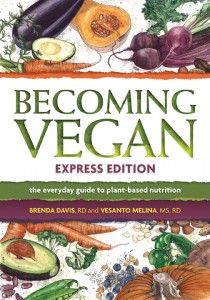 CV – Tell me a little bit about Becoming Vegan: Express Edition and what inspired you to write it.
CV – Tell me a little bit about Becoming Vegan: Express Edition and what inspired you to write it.
BD & VM –We wrote the original Becoming Vegan in 2000, and it was simply time to re-write it. The amount of new information in 13 years is tremendous. We actually started the project in 2011 – our publisher decided that we needed to have 2 versions of the book – a shorter Express Edition for consumers and a more in-depth, fully referenced Comprehensive Edition for health professionals and others with a keen interest in nutrition. The larger edition (which will be about 624 pages) will be out in the spring of 2014.
CV – Is there a big difference between the classic Becoming Vegan and Becoming Vegan Express Edition?
BD & VM –Although the layout is similar, the information has changed considerably. In addition, the chapters that address animal rights and ecological issues, and chronic disease are much expanded. Concepts of feeding infants and toddlers have evolved, and we can be even more confident of the value of vegan nutrition in relation to human health.
CV – Is there a myth about the vegan diet that you find to be the most persistent? How can we dispel it?
BD & VM –The most persistent myths are that vegans can’t get enough protein without meat, enough calcium without milk, or enough omega-3s without fish. We discuss these and many other myths in detail in Becoming Vegan: Express Edition. Here are simple ways to dispel these myths:
Protein without meat. People need about 10-15% of calories from protein. Most plant foods contain at least this much – legumes and nonstarchy vegetables provide about 15-40% of calories from protein and nuts, seeds and grains provide about 8-17% of calories from protein. Veggie “meats” (e.g. veggie burgers, sausages and lunch slices) provide about 50-80% of calories from protein. So if you eat a variety of plant foods, it is easy to get enough protein. In fact, the average vegan consumes 11-14% of calories from protein. People who do not eat enough calories may not get enough protein, and people who eat mostly fat and sugar (e.g. chips and soda) may fall short as well—but that’s true on any diet, not just vegan diets.
Calcium without milk. In Paleolithic times, the estimated calcium intake was about 2000 mg per day and not a single drop of cow’s milk or any other mammal milk was consumed. Plant got their calcium from mainly from plants – and so can we. We do need to learn about plant sources such as low-oxalate greens (e.g. kale and broccoli), beans, some nuts and seeds, vegetables and fruits. You can also include some fortified foods such as non-dairy beverages and foods made with calcium such as tofu.
Omega 3’s without fish. We can get omega-3 fatty acids from land plants such as flaxseeds, chia seeds, hempseeds and walnuts. While some believe that we need the long-chain omega-3s from fish, most people can convert the alpha-linolenic acid in plants to EPA and DHA. Vegans who want to have a direct source of EPA and DHA can use DHA/EPA-rich microalgae supplements (fish also get their omega-3s from microalgae). Microalgae-based DHA/EPA supplements are free of environmental contaminants and are widely available. Just search for vegan DHA/EPA.
CV – There have been a few vocal ex-vegans who have made news in the vegan community recently. What do you think causes people to fail on a vegan diet?
BD & VM –In our experience it is usually a matter of fine tuning the diet, or failing to do so. Some people switch from meat and potatoes to pasta and bagels or try to live on fruit. Diets centered on refined carbohydrates or limited to fruit can have insufficient protein, leading to malnutrition and health problems. Some people try to become vegan but don’t ensure reliable sources of vitamin B12, vitamin D, or iodine. Yet when sources of these nutrients are added, health is restored. Rather than adding animal products, people can instead succeed when the appropriate vegan sources of particular nutrients are added. Sometimes they do need to learn to put together a balanced vegan diet that works for their lifestyle, and our books help with this; a consultation with a vegan dietitian also can help.
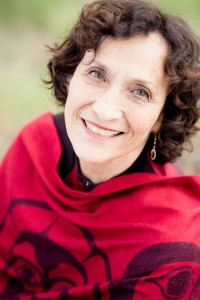 CV – Other than Vitamin B12, are there any nutrients in particular that you suggest vegans be mindful of? Are there any common deficiencies that you see in people who have been vegan for many years?
CV – Other than Vitamin B12, are there any nutrients in particular that you suggest vegans be mindful of? Are there any common deficiencies that you see in people who have been vegan for many years?
BD & VM – First, the other nutrients we see as being problematic are vitamin D for those who have limited access to sunshine, iodine for those not using iodized salt or seaweed, and omega-3 fatty acids for those not including good dietary sources.
As for common deficiencies in long term vegans, B12 is what comes to mind. It is critical that vegans include a reliable source. Some vegans don’t include legumes and other protein-rich plant foods daily and protein intakes can be insufficient as a result.
CV – Do you have any advice for vegans who want to stay as healthy as possible?
BD & VM – Absolutely, that is why we wrote Becoming Vegan: Express Edition (available now) and/or Becoming Vegan: Comprehensive Edition (to be released in 2014). Follow the dietary guidelines and use the food guide to ensure nutrient needs are being met.
CV – What does each of you typically eat in the span of a day?
Brenda’s Typical Day:
Although this eating style involves more food preparation than some people are used to, it maximizes protective components such as antioxidants and fiber and minimizes harmful dietary components such as salt, sugar, added fats, refined carbohydrates and products of oxidation.
Breakfast:
Big Breakfast Bowl
¼ cup sprouted grains
¼ cup dehydrated, homemade granola
1 Tbsp flax, chia and hempseeds
1 cup blueberries
1 cup other fruit
1 1/2 cups cup fortified soymilk or homemade almond milk
½ cup non-dairy plain yogurt (when available or homemade)
4 oz of green juice (not every day)
Lunch
1 ½ cups homemade lentil soup with dark greens
2 large dehydrated vegetable/seed crackers (homemade)
2 Tbsp cashew cheese (homemade)
Fresh tomato slices, fresh avocado slices,
One orange or other fruit
One stuffed date (stuffed with nut butter, cacoa, date filling)
Dinner:
Huge organic salad with kale and a variety of greens
Many different raw vegetables (e.g. carrots, peppers, watermelon or daikon radish, grated beets, tomatoes, celery, sprouts); some steamed vegetables (e.g. yams, squash or beets) beans, tofu or tempeh or tofu, soaked and dehydrated pumpkin or sunflower seeds, and tahini dressing.
Frozen fruit ice cream (using a juicer or Vitamix) with walnuts and peanuts on top
Sometimes lunch is the giant salad and dinner is a hot meal like a curry, quinoa and steamed veggies or a kale salad.
Vesanto’s Typical Day (pretty simple)
Fruit smoothie with protein powder
Go to the gym
Early lunch of lentil soup and a big salad (Romaine, red cabbage, and the high calcium greens), with our famous “Liquid Gold Dressing”—a source of vitamin B12 (from nutritional yeast) and omega-3 fatty acids (from flaxseed oil).
Dinner of tofu or some delicious way of preparing beans, a baked potato, and a big salad.
Occasional snacks when needed: tea (with fortified nondairy milk), raw veggies, fruit, frozen grapes.
I enjoy recipes from Cooking Vegan (by V. Melina and J. Forest); this is the companion volume to Becoming Vegan: Express Edition and contains plenty of high protein menu items that are healthy, delicious, and easy.
